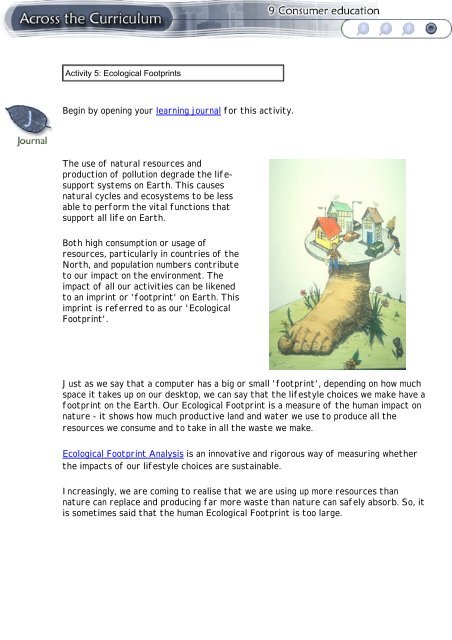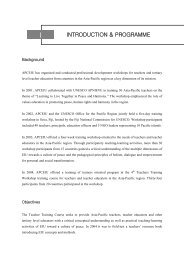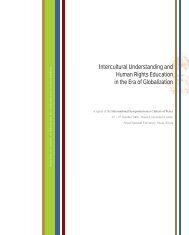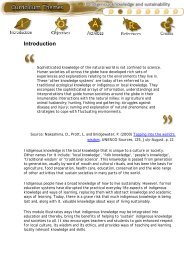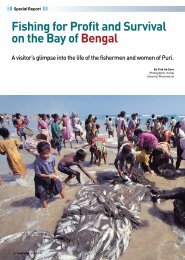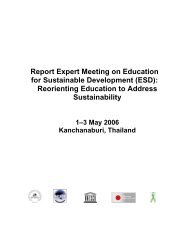Module 9 Consumer education - APCEIU
Module 9 Consumer education - APCEIU
Module 9 Consumer education - APCEIU
Create successful ePaper yourself
Turn your PDF publications into a flip-book with our unique Google optimized e-Paper software.
Begin by opening your learning journal for this activity.<br />
The use of natural resources and<br />
production of pollution degrade the lifesupport<br />
systems on Earth. This causes<br />
natural cycles and ecosystems to be less<br />
able to perform the vital functions that<br />
support all life on Earth.<br />
Both high consumption or usage of<br />
resources, particularly in countries of the<br />
North, and population numbers contribute<br />
to our impact on the environment. The<br />
impact of all our activities can be likened<br />
to an imprint or 'footprint' on Earth. This<br />
imprint is referred to as our 'Ecological<br />
Footprint'.<br />
Just as we say that a computer has a big or small 'footprint', depending on how much<br />
space it takes up on our desktop, we can say that the lifestyle choices we make have a<br />
footprint on the Earth. Our Ecological Footprint is a measure of the human impact on<br />
nature - it shows how much productive land and water we use to produce all the<br />
resources we consume and to take in all the waste we make.<br />
Ecological Footprint Analysis is an innovative and rigorous way of measuring whether<br />
the impacts of our lifestyle choices are sustainable.<br />
Increasingly, we are coming to realise that we are using up more resources than<br />
nature can replace and producing far more waste than nature can safely absorb. So, it<br />
is sometimes said that the human Ecological Footprint is too large.


